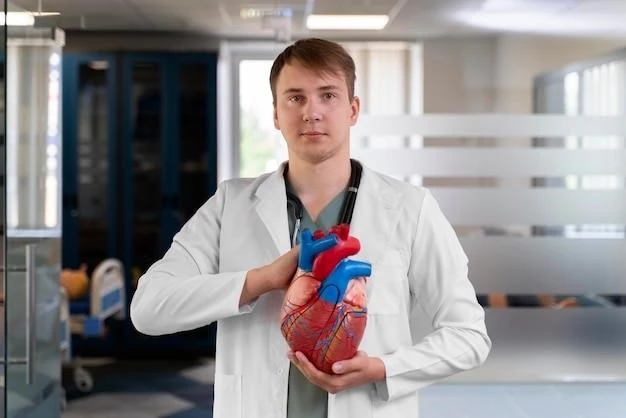Causes of aortic coarctation can include congenital heart defects, such as abnormal development of the aorta during pregnancy․ Understanding these causes is crucial for diagnosing and managing the condition effectively․
Causes of Aortic Coarctation
Several factors can contribute to the development of aortic coarctation, a narrowing of the aorta⁚
**Congenital Heart Defects**⁚ The most common cause, where the aorta is narrow from birth․
**Abnormal Aortic Development**⁚ Issues in the formation of the aorta during fetal development․
**Genetic Factors**⁚ Certain genetic conditions may increase the risk․
**Family History**⁚ Having a close relative with a heart defect can raise the likelihood of aortic coarctation․
Understanding these causes is vital for early detection and appropriate management of the condition․
Symptoms of Aortic Coarctation
Recognizing the symptoms of aortic coarctation is crucial for early intervention⁚
**High Blood Pressure**⁚ Often found in the arms but lower in the legs․
**Headaches**⁚ Especially in younger individuals․
**Chest Pain**⁚ Discomfort or pain in the chest․
**Leg Cramps**⁚ Muscle pain in the legs, particularly during exercise․
**Cold Feet or Legs**⁚ Reduced blood flow to the lower body parts․
**Shortness of Breath**⁚ Difficulty breathing, especially during physical activity․
**Nosebleeds**⁚ Spontaneous bleeding from the nose․
If you or a loved one experience these symptoms, seek medical attention promptly for evaluation and diagnosis․
Diagnosis of Aortic Coarctation
Diagnosing aortic coarctation involves various tests and assessments⁚
**Physical Examination**⁚ Identifying differences in blood pressure between arms and legs․
**Echocardiogram**⁚ Using sound waves to create images of the heart’s structure․
**MRI or CT Scan**⁚ Providing detailed pictures of the heart and blood vessels․
**Cardiac Catheterization**⁚ Invasive procedure to assess heart function and blood flow․
**X-rays**⁚ Useful for visualizing the heart and aorta․
**Pulse Volume Recordings**⁚ Measuring blood volume changes in extremities․
Early and accurate diagnosis is key to determining the best treatment approach and preventing complications․
Treatment Options for Aortic Coarctation
The treatment of aortic coarctation may involve different approaches⁚
**Medication**⁚ To manage blood pressure and heart function․
**Balloon Angioplasty**⁚ Procedure to widen the narrowed aortic area․
**Surgery**⁚ Coarctation repair by removing the narrowed section and reconnecting the healthy portions of the aorta․
**Stent Placement**⁚ In more complex cases, a stent can be inserted to keep the aorta open․
**Regular Monitoring**⁚ Follow-up appointments to track progress and address any issues․
Consult with a healthcare professional to determine the most suitable treatment plan based on individual circumstances․
Complications of Aortic Coarctation
Untreated aortic coarctation can lead to serious complications⁚
**Heart Failure**⁚ Strain on the heart due to increased workload․
**Aneurysm**⁚ Weakening and bulging of the aortic wall․
**Stroke**⁚ Increased risk due to high blood pressure․
**Premature Coronary Artery Disease**⁚ Developing heart problems at a young age․
**Endocarditis**⁚ Infection of the heart’s inner lining․
**Hypertension**⁚ Persistent high blood pressure can damage organs․
Prompt diagnosis and appropriate treatment help prevent these complications․ Regular follow-ups and lifestyle adjustments can aid in managing the condition effectively․
Aortic Coarctation in Infants
Identifying aortic coarctation in infants is crucial for early intervention⁚
**Poor Feeding**⁚ Infants may have difficulty feeding or tire easily․
**Breathing Problems**⁚ Rapid breathing or shortness of breath․
**Irritability**⁚ Excessive crying or fussiness․
**Weakness or Lethargy**⁚ Unusual lack of energy․
**Cool Lower Extremities**⁚ Legs and feet may feel colder than usual․
Early detection through pediatric check-ups and prompt medical attention are vital to manage aortic coarctation effectively in infants․

Surgical Procedures for Aortic Coarctation
For aortic coarctation, surgical intervention may be necessary⁚
**Coarctation Repair**⁚ Surgeons remove the narrowed segment of the aorta and reconnect the healthy portions․
**Balloon Angioplasty**⁚ Involves using a balloon to widen the narrowed section non-surgically․
**Stent Placement**⁚ In some cases, a stent may be inserted to keep the aorta open․
**Open-heart Surgery**⁚ Used for complex or severe coarctation cases․
**Regular Monitoring**⁚ Follow-up care post-surgery is crucial for recovery and long-term health․
Consult with a cardiovascular surgeon to determine the most suitable surgical approach based on individual factors and coarctation severity․
Lifestyle Management with Aortic Coarctation
Adopting a healthy lifestyle is essential for managing aortic coarctation⁚
**Regular Exercise**⁚ Consult with healthcare providers for safe exercise recommendations․
**Balanced Diet**⁚ Emphasize fruits, vegetables, whole grains, and lean proteins․
**Maintain a Healthy Weight**⁚ Achieving and maintaining a healthy weight can ease strain on the heart․
**Monitor Blood Pressure**⁚ Regularly check and manage blood pressure levels․
**Avoid Smoking**⁚ Smoking increases heart disease risk; quitting is beneficial․
**Regular Medical Follow-ups**⁚ Ensure prompt intervention for any changes in symptoms or health․
By incorporating these lifestyle habits, individuals with aortic coarctation can better manage their condition and improve overall heart health․
